RECUPERATING TIBET
China alone classifies ecology as a heroic human struggle. Does any other nation see the messy, contradictory, complex and unpredictable processes of ecological recovery as “construction of ecological civilisation”? The magnificent mission the CCP has set itself, of arduously constructing the highland ecological civilisation in Tibet, to use its official terminology, is laughable. It’s also a long list of new regulations that come into force across Tibet Autonomous Region 1 May 2021. [1]
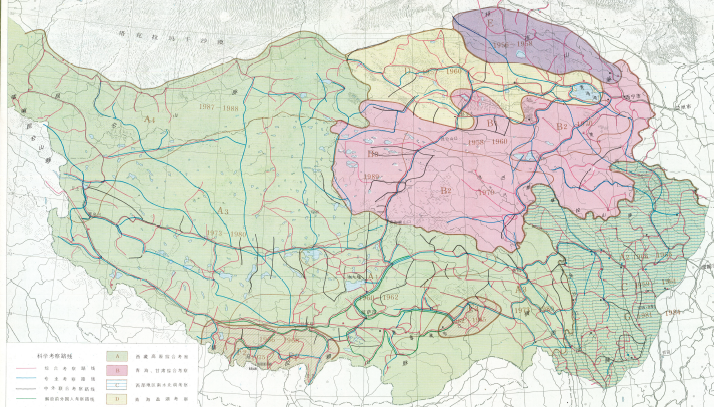
Although these 68 new regulations are, like most Chinese laws, quite vague, long on goals, short on methods, they still weigh in at over 4300 words in English translation. The length is largely due to the many carve-outs required to allow business as usual to go ahead, unhindered by these florid assertions of control.
https://flk.npc.gov.cn/detail.html?ZmY4MDgwODE3NzRjN2EzZDAxNzc2YjMzZjUyZTEzM2U%3D
西藏自治区国家生态文明高地建设条例
(2021年1月24日西藏自治区第十一届人民代表大会
第四次会议通过)
Regulations of the Tibet Autonomous Region on the Construction of National Ecological Civilization Highlands
(On January 24, 2021, the Eleventh People’s Congress of the Tibet Autonomous Region
Adopted at the fourth meeting)
目 录
Mining will still be allowed, and also the geological investigations that lead to mining. Hydro dams will still be built, with power grids to export electricity afar, also huge solar power installations in Tibet, which after all has room.
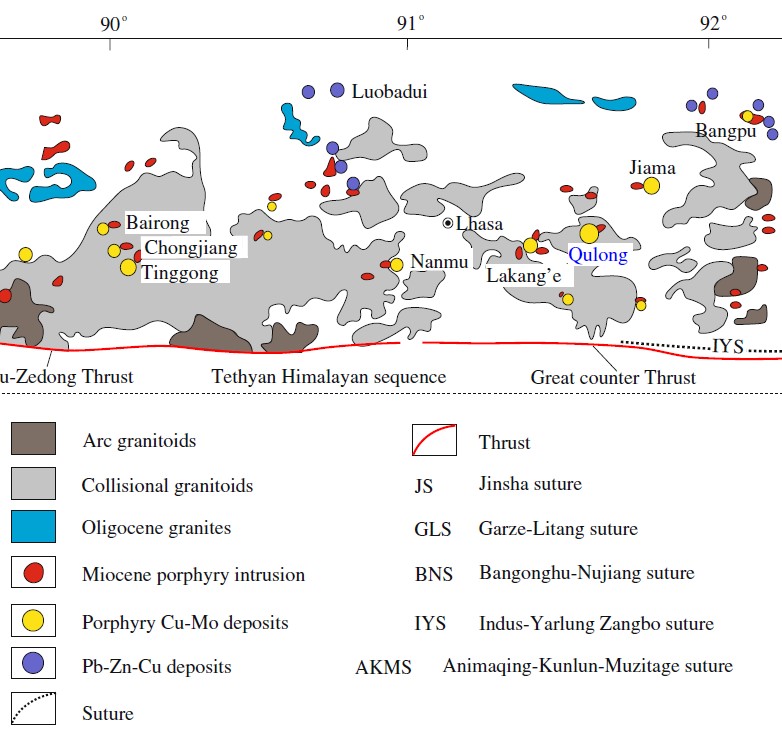
Existing Chinese industries, extractions, enclaves, corridors are all exempted from having to worry if these new regulations in any way restrict them. Article 9 exempts not only all the above, but also the military, who love to publicise their tank tracked purpose-built high-altitude vehicles chewing up the scenery along the border with India.

GRAZING WHILE TIBETAN
Not so fortunate are the Tibetans living customary productive lives, now caught up in these new regulations that claim to cover the whole Tibet Autonomous Region, which is the size of UK, Germany, Italy and Poland combined, with as much climatic and ecological variation as Scotland and Sicily. Many of these regulations prescribe what Tibetans must now do, and no longer do. Article 14 announces the TAR government shall: “implement the grazing prohibition and resting of grazing, and the balance of grass and livestock, and establish an ecological restoration mechanism for degraded grasslands.” As usual, the nomadic pastoralists are to blame, and must be removed, to grow more grass. Article 20 announces that TAR will persist with “High-altitude and ecological relocation projects in nature reserves, building model sites for nature protection.” Article 38: “Religious and folklore activities should conform to the concept of green ecology. Guide the greening of religious activities and consumption methods.”
Overall, these “regulations” are mostly operatic exhortations, charging every sector, every community with responsibility to fulfil this sacred mission. That is how the legislature of a nominally “autonomous region” displays its slavish devotion to inscribing Xi Jinping Thought onto every glacier, pasture, river and mountain.

In case anyone might think this is not about them, article after article enumerates the duties of each and all, a toccata and fugue of missionary enthusiasm, like Albert Schweitzer civilising the natives with his organ recitals in the jungle.[2] Article 36: “People’s governments at all levels should strengthen the comprehensive improvement of urban and rural human settlements, promote urban and rural sewage, garbage treatment, and toilet revolutions, protect ecological villages and towns with traditional ethnic characteristics, and build green towns, green villages, and green borders.”
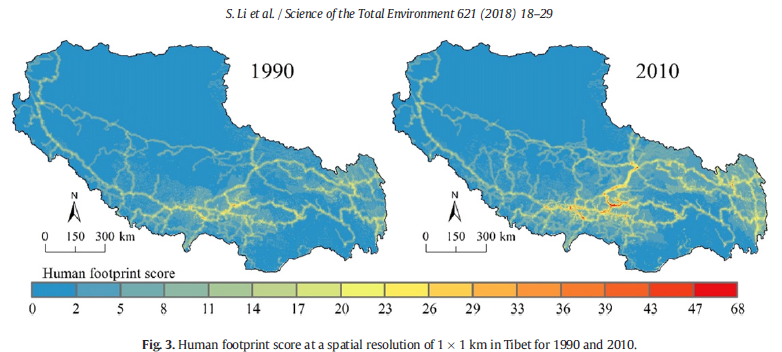
Article 34: “The competent education department of the People’s Government of the Autonomous Region shall integrate the content of ecological civilization throughout the entire process of national education, compile textbooks for the construction of ecological civilization with local characteristics and develop and produce multimedia video materials.” Article 32: “improve the ecological civilization literacy of the whole people, form an ecological civilized society, and build man and nature harmonious symbiosis demonstration site.” Somehow the harmonious symbiosis of man and nature is entirely compatible with ongoing, accelerating removals of pastoralists from the pastures they managed sustainably and productively over thousands of years, before the party-state projected its power into the grasslands. Go figure.
Some of these “regulations” are so vague, it’s hard to say what they might mean. Article 29: “People’s governments at or above the county level and their development and reform, cultural and other related departments shall develop ecological and cultural industries with ethnic characteristics and support ethnic traditional industries that meet the requirements of ecological environment protection.”
Or Article 23: “To build a national ecological civilization highland, we should adhere to the new development concept, insist on ecological priority to green development, establish and improve the ecological economic system with industrial ecologicalization and ecological industrialization as the main body, cultivate the public brand of the third pole region of the earth, and realize Green, low-carbon and high-quality development, and build a green development test site.”
What do “industrial ecologicalization and ecological industrialization” look like on the ground? Who can say? Sounds good.

Then, inevitably, there is Article 33: “The cultivation of ecological culture shall strengthen the study, publicity and education of the following contents: (1) Xi Jinping Thoughts on Socialism with Chinese Characteristics for the New Era, especially Xi Jinping Thoughts on Ecological Civilization and General Secretary Xi Jinping’s important expositions on Tibet work; (2) The party’s strategy for governing Tibet in the new era, especially “We must insist on ecological protection first, and protecting the ecology of the Qinghai-Tibet Plateau is the greatest contribution to the survival and development of the Chinese nation”; (3) The core values of socialism, the sense of community of the Chinese nation, the excellent traditional Chinese culture and the common ecological values of all ethnic groups on the Qinghai-Tibet Plateau.”
That is actually what this entire document is about: paying tribute to the emperor. Not only must Tibetans prostrate in submission, but they must also, in the name of ecological civilisation, accept “the sense of community of the Chinese nation, the excellent traditional Chinese culture.” These are key code language phrases for all Tibetans identifying as Chinese, belonging to the one Chinese race, because of the magnetic excellence of Chinese tradition. Classic imperial court rhetoric of the submission of the uncooked to the imperial throne. Ecological civilisation is just another way of establishing who is in command.
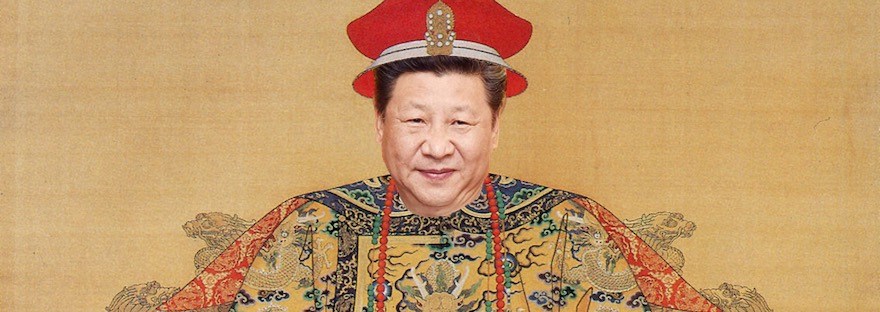
LET’S GET SERIOUS
Upriver from Lhasa is the Chulong copper/gold/silver/molybdenum mine, currently scaling up under its new corporate owner, Zijin Mining, to be one of the biggest copper mines worldwide. Blowing up, digging out, crushing and chemically concentrating those precious metals requires dumping hundreds of thousands of tons of toxic waste every day, on site. So is Zijin now worried TAR is getting serious about tailings dams, toxic metals, leaching into the Kyichu Lhasa River, or lo ng term mine rehabilitation once the ore is exhausted?
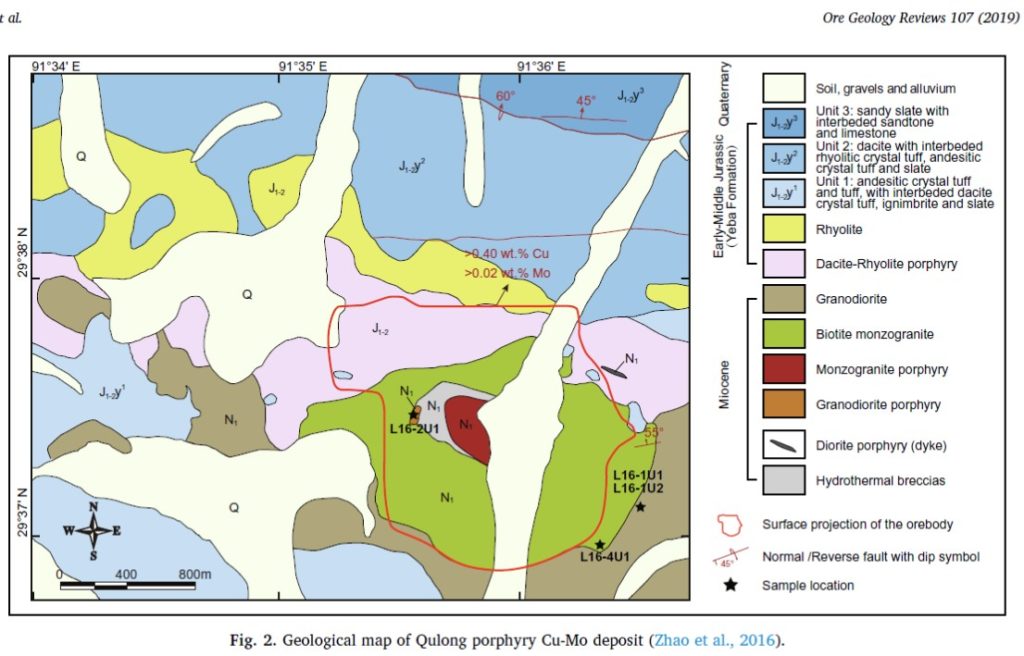
Zijin is a corporate giant exploiting Tibetan copper deposits, part of its global reach, with the blessings of the party-state at highest levels. Zijin says in its 2020 Annual report: “Copper business is the Company’s high-potential segment capable of achieving exploding growth. The Company is one of the Chinese enterprises having the largest resource reserve and production volume of copper. The Company is driving for faster monetisation of its resources advantage. It is expected that a number of world-class, super-large copper mines will soon complete construction and commence production. For example, in 2021, projects including Julong [Chulong] Copper in Tibet, the Kamoa Copper Mine in the DR Congo as well as the Timok Copper and Gold Mine in Serbia are anticipated to be ready for phase one production.”
Is Zijin worried about the compliance costs in incurs because of these new regulations? From Zijin’s perspective, do these regulations change anything? Unlikely.
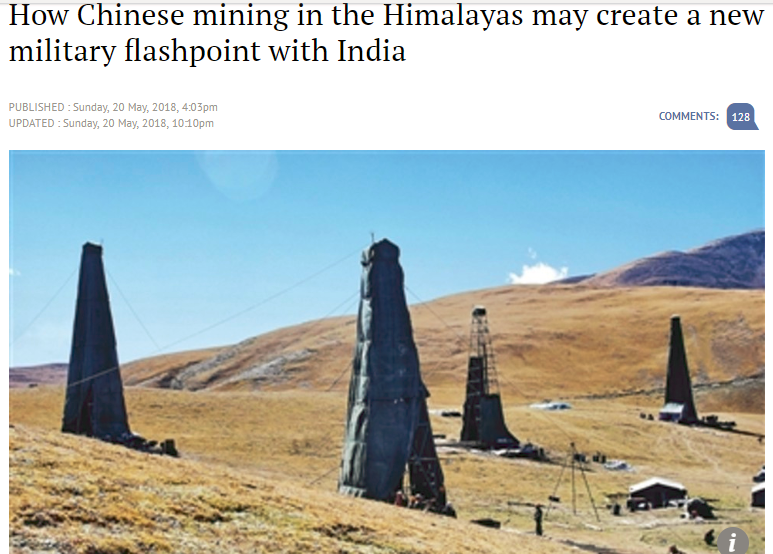
Zijin is a main driver of the new Tibetan economy: “the newly acquired Julong Copper in Tibet owns the largest porphyry-type copper deposit that has ever been discovered in China, which has a copper-equivalent resources volume of 10.40 million tonnes grading 0.41% in average. There are also massive volumes of low-grade copper and molybdenum resources present in the mining zones of the project. Provided that the necessary technological and economic conditions exist, the prospective copper resource reserve within Julong Copper’s mining zones could exceed 20 million tonnes.”
Zijin has long enjoyed impunity after toxic spills, with courts throwing out environmentalists’ cases because they weren’t locals, and thus not affected, thus irrelevant.[3]
In 2020 Zijin had income of RMB 83 billion, on which it paid RMB 1.2 billion in taxes. After taxes, its net profit was RMB 3.1 billion. Zijin says it: “attaches great importance to and continues to improve the work on environmental protection. It adheres to the environmental protection concept of “green mountains and clear water are as good as mountains of gold and silver”, earnestly puts environmental protection and ecological restoration into practice, emphatically promotes the development of green mines, and remains highly committed to forming the eco-development model.” Zijin has mastered the necessary art of performative declamation of party-state slogans. End of story.
By comparison, in 2019 the whole Tibet Autonomous Region budget spent RMB 218.8 billion, but raised only RMB 15.75 billion in tax revenue.[4] The rest of this massive subsidy came from the central party-state in Beijing. Zijin’s revenue is more than five times what TAR raises. So who calls the tune?

VAGUE BUT SONOROUS
The most telling of overblown rhetorics in these “Regulations” are the most triumphant but content-free. “Build a beautiful Tibet, and build Tibet into a highland of national ecological civilization…… an important national ecological security barrier. Protecting the ecology of the Qinghai-Tibet Plateau is related to the survival and long-term development of the Chinese nation…….. green water and green mountains are golden mountains and silver mountains, respect nature, conform to nature, protect nature, and build a national ecological security barrier to strategically and harmoniously between man and nature Symbiosis demonstration sites, green development test sites, nature protection model sites, and ecological enrichment pioneers, protect the life and trees of the Qinghai-Tibet Plateau, thousands of rivers and mountains, realize the modernization of harmonious coexistence between man and nature, and comprehensively build a model of beautiful Tibet in China……

……. compile national economic and social development plans, incorporate the construction of ecological civilization highlands, and integrate ecological civilization construction with economic construction, political construction, cultural construction, and social construction, coordinate implementation……. The people’s government of the autonomous region shall coordinate the promotion of the management of mountains, rivers, lakes, glaciers, forests, grasslands…….. People’s governments at all levels shall establish a glacier protection system, carry out dynamic monitoring of glaciers and periglacial areas, strictly control the production and operation activities in the surrounding areas of the glacier, and maintain the original appearance of the glacier…….. To build a national ecological civilization highland, it is necessary to establish and improve an ecological cultural system based on ecological values, cultivate ecological culture, spread the concept of ecological civilization, improve the ecological civilization literacy of the whole people, form an ecological civilized society, and build man and nature harmonious symbiosis demonstration site……. The people’s congresses at or above the county level and their standing committees should strengthen supervision and inspection of the implementation of ecological environment laws and regulations, strengthen supervision of the construction of national ecological civilization highlands, and inspect and supervise the implementation of the national ecological civilization highlands construction work……. People’s governments at all levels are responsible for the creation of national ecological civilization construction demonstration zones in their administrative regions, and the establishment of management supervision and evaluation mechanisms. Include the establishment of a national ecological civilization construction demonstration zone into the content of the evaluation and assessment of the leadership team and leading cadres.”
Some of the best educated Tibetans will have the task of translating all this into Tibetan. How?

That’s an operatic swell of oversell, but who can say what such phrases mean, if anything? Is this rampant megalomania? Is it the death of Tibet as a vast plateau beyond the gaze of the state, that governs itself naturally?
If these were regulations seriously intended for implementation, accountability, enforcement and review, they would not only be more specific, they would create mechanisms to deliver implementation. Yet these “regulations” concede the party-state, out on the rangelands, has never had a grasp of what it strains to reach, and instead relies on investigative journalism to alert Beijing to local cadres mouthing campaign slogans and pocketing the money. Article 60: “Public media such as radio, television, newspapers, and the Internet shall conduct public opinion supervision over state agencies, enterprises, institutions, and social organizations in the construction of the national ecological civilization highland. State agencies, enterprises, institutions, and social organizations shall consciously accept the supervision of public opinion, and promptly investigate, handle, and feed back the problems reported by the media.”
The weakness of the party-state in ensuring environment is taken seriously, within its own ranks, is plain. When it comes to powerful vested interests, such as the mining companies daily dumping hundreds of thousands of tons of toxic waste upriver from Lhasa, will they take these regulations to heart?
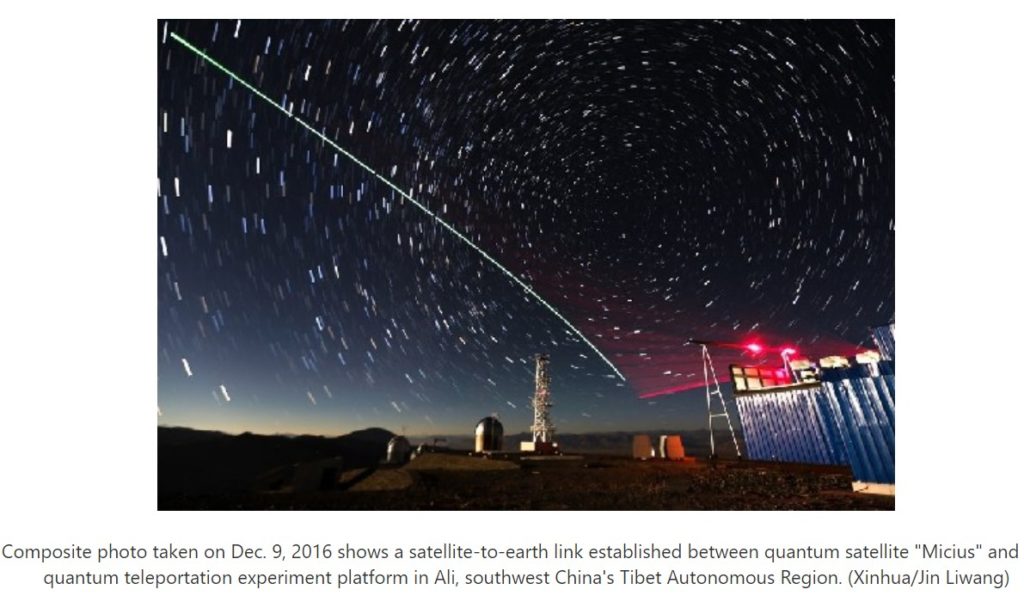
OMNIPOTENT CHINA DISCOVERS GREEN?
One can readily take official pronouncements such as this, on a wide range of topics, such as vocational education, land consolidation or labour transfer, and despair. China’s polymorphous mania for control knows no boundaries, neither across Tibet, nor outer space, the deep ocean seabed or the Arctic, all of them new frontiers of China extending its reach, as of right.
One may despair, that this is the end for Tibet, the apocalypse is nigh, China is omnipotent, Tibetans are both invisible and helpless, China will have its way and establish absolute mastery. Despairing at imminent, urgent, irreversible crisis in Tibet was long the message of Tibetan exiles and their supporters, and perhaps a reason Tibet faded from view, after decades of announcing catastrophe is imminent. For how long can a crisis be forever urgent?
In 2020 that prophetic voice of despair has been rediscovered by Adrian Zenz, who achieved so much in drawing the world’s attention to Xinjiang. He dived deeply into Chinese sources, not only official media but into obscure websites recruiting staff and soliciting tenders for surveillance equipment and alerted the world to the systemic state violence of a party-state out to punish an entire nationality for failing to assimilate. More recently Zenz turned back to Tibet, readily assembling a list of key code phrases of China’s disdain for the Tibetans, and an official superiority complex that mandates labour transfer of displaced Tibetans. Having seen how euphemisms about vocational education and labour transfer in Xinjiang mask a punitive campaign to imprison, coerce, torture and indoctrinate Xinjiang Uighurs en masse, Zenz understandably fears the worst: that Tibet is about to be made into a Xinjiang.
The result is that global gatherings of democratic politicians and Tibet support NGOs now talk of forced labour in Tibet as established fact, even though almost no evidence has emerged in the six months since Zenz published.
Veteran climate campaigners warn against what they call doom-mongering, saying it “is a natural emotional reaction. Good people fall victim to doomism. I do too sometimes. It can be enabling and empowering as long as you don’t get stuck there. I see a perfect storm of climate opportunity.” Can we too look for the opportunities to be found in China’s increasingly frequent announcements on Tibet policy?

DELUSIONAL SELF-IMPORTANCE
There is an alternative to frightening ourselves, and then frightening others, by lining up all the self-aggrandising cliches of power in today’s China. The alternative is laughter. China’s mapping of its control ambitions over Tibet is almost as huge as the territory it seeks to control. Mapping mania run rampant, plus a new suite of 68 regulations proclaiming governance over every blade of grass that grows in Tibet, every drop of water from a Tibetan glacier into a Tibetan river. Like Borges’ mapper whose map was as big as the territory it purported to represent, this absurdist delusion seeks to imprint human will -specifically the will of one man, named Xi Jinping- into every rock of Tibet.
China is determined to create nothing less than a cosmology with Chinese characteristics, that controls time and space, territorialises China’s control of the Tibetan landscapes it has never understood, extends the reach of the party-state to every thought and action of all Tibetans, is in control of all that is. That’s ludicrous. The delusional self-importance of these “Regulations” is astounding. Likewise, China claiming authorship of Tibet, inventing a new Tibet and new Tibetans newly trained to enter history, climb the ladder of modernity and eventually emerge as civilised.
In 1895 Lewis Carroll published a very short story: ““What a useful thing a pocket-map is!” I remarked.
“That’s another thing we’ve learned from your Nation,” said Mein Herr, “map-making. But we’ve carried it much further than you. What do you consider the largest map that would be really useful?”
“About six inches to the mile.”
“Only six inches!” exclaimed Mein Herr. “We very soon got to six yards to the mile. Then we tried a hundred yards to the mile. And then came the grandest idea of all! We actually made a map of the country, on the scale of a mile to the mile!”
“Have you used it much?” I enquired.
“It has never been spread out, yet,” said Mein Herr: “the farmers objected: they said it would cover the whole country, and shut out the sunlight! So we now use the country itself, as its own map, and I assure you it does nearly as well.”[5]
China is mapping Tibet as never before, with such obsessive detail, precisely because it never succeeded in colonising Tibet (unlike Xinjiang). So ambitious is China’s assertion of naming and numbering everything Tibetan, it is in need of a map as big as the territory. The purpose of this map is not to colonise, since that has proved impossible, but to control from afar, and assert a Chinese cosmology as controller.
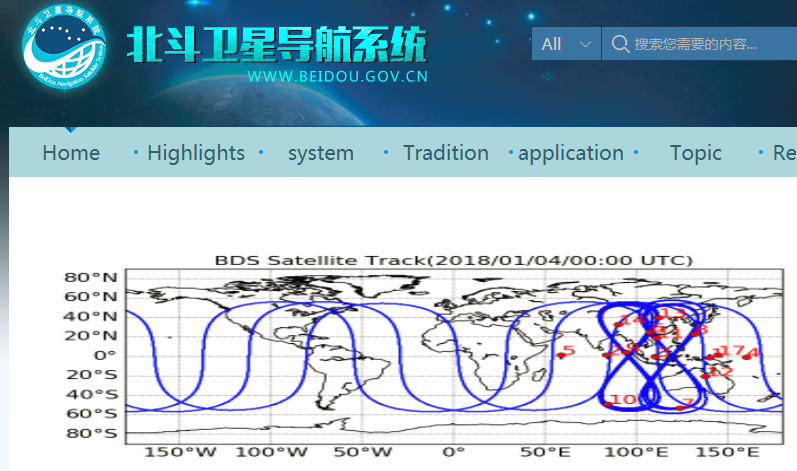
REMOTEST OF CONTROL
China, with its armada of satellite cameras far above Tibet feeding torrents of data to ground controllers and their data crunching algorithms, is convinced it can govern Tibet from the sky, and from control rooms in Beijing. Endless reports and scientific research articles propose ways China can switch on and off rain over the Tibetan Plateau, glacier mass measurement, control of river flow, grass growth, hydro dam water release and retention, and myriad other techno fantasies. Tibet, like a car that needs no driver, can be governed by remote control, to the greater glory of China, its “excellent traditional Chinese culture” and modern mastery of everything. The new Regulations of the Tibet Autonomous Region on the Construction of National Ecological Civilization Highlands, which come into force May 1, 2021, are a major mapmaking step towards the cosmology China is building, to glorify Xi Jinping, to territorialise Tibet as part of the nation-state of China, to declaim new universals of time and space, with Chinese characteristics.
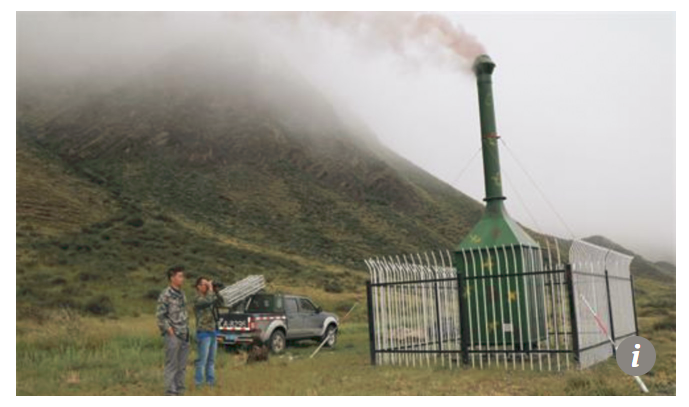
In 1946 Jorge Luis Borges famously riffed on Carroll’s map the size of the territory, as a project of empire, making conquered lands subject to imperial will by mapping.[6] “On Rigour in Science” reminds us China’s delusions of total knowledge and total control are ridiculous. In 1982 Umberto Eco, with a straight face, went further, explaining ways a map as big as the territory might work, but actually couldn’t. It’s in How to Travel with a Salmon.
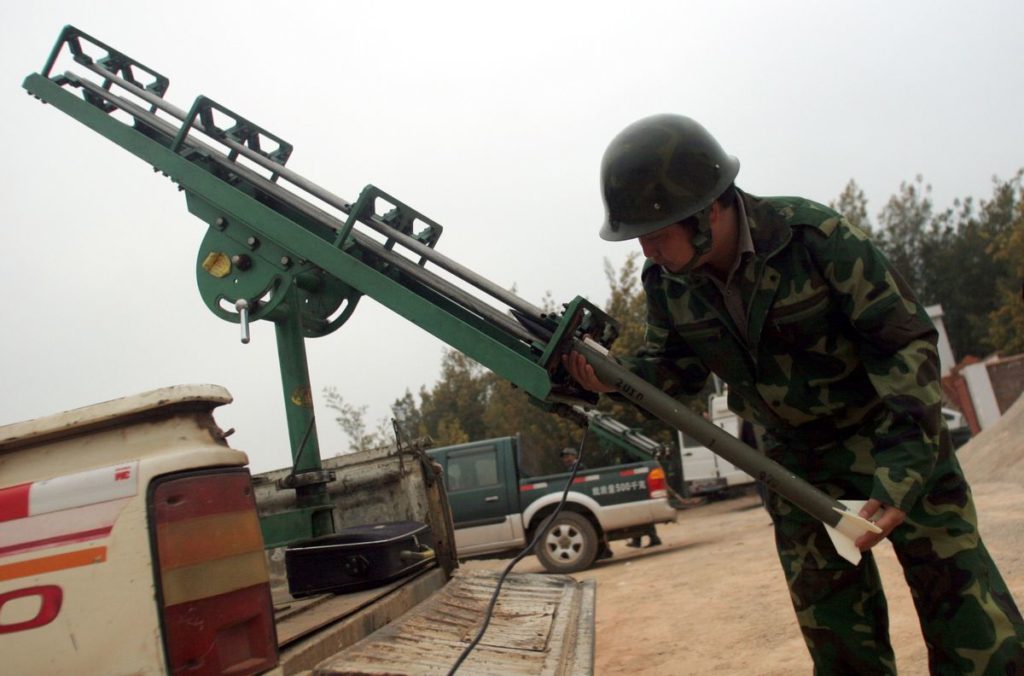
Why were the most original, creative, insightful minds -Carroll, Borges, Eco- drawn to this most modern of delusions of exactitude and total control? China’s new Regulations of the Tibet Autonomous Region on the Construction of National Ecological Civilization Highlands is an instant classic, to be put on the shelf alongside Carroll, Borges and Eco. Don’t despair over Tibet.
In Borges’ story the preposterous map as big as the territory is not the end of the story. That map was abandoned by those meant to use it, finding it not only impractical but an obstruction to getting on with practicalities such as growing crops. Despite the enormous effort to expertly map locations and resources, corridors and enclaves of the empire, the whole effort fell apart, the map fell into disuse and tatters, occasionally sheltering beggars, but little else.
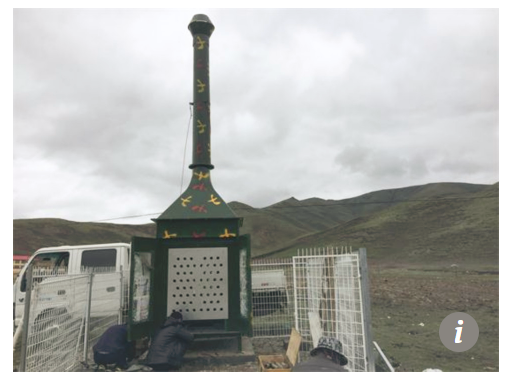
“There was a sense that in time one might gather sufficient intelligence to know the world and consequently to predict and forestall the outbreak of hostilities. After all, professors were there to provide knowledge about every imaginable culture and territory in the world, while journalists reported on location and undercover operatives blended like chameleons into any possible environment, all apprising the West of what the rest were really doing. Of course, with his image of the imperial map rotting over its territory, Borges exposed an ideal whose full absurdity and naïveté only appears now, in retrospect. Nor is it simply that those responsible for intelligence have become lazy or stupid or simply overtaxed.”[7]

LIVING MOMENT TO MOMENT ON LAND, NOT IN ALGO LABYRINTHS
China’s compulsive over-reach, to control everything imaginable, only gets in the way of Tibetans living their lives, and will end in tatters. Getting in the way, too, is the florid virtue signalling of the TAR government. Best to be clear-headed as to what the virtue-signalling is for. It has little to do with environment, still less to do with reforestation of clear-felled Kham (not even mentioned), or active regeneration of degraded grassland patches (barely mentioned). The virtue that is so elaborately signalled is the virtue of publicly conforming to Xi Jinping Thought. That’s all that counts these days. CCP gets high on its own supply, as Oliver Stone’s Scarface memorably put it. Boosterism on steroids.
And elaborate displays of loyalty to the Xi Jinping line, by party hacks in Lhasa, are the best way to get Beijing to send more cash. After all, TAR now has an ecological civilisation to arduously construct, plus industrial ecologicalization and ecological industrialization. That’s going to need heaps of cash to prop up the chronically revenue-starved TAR budget. That in turn will hire more cadres.
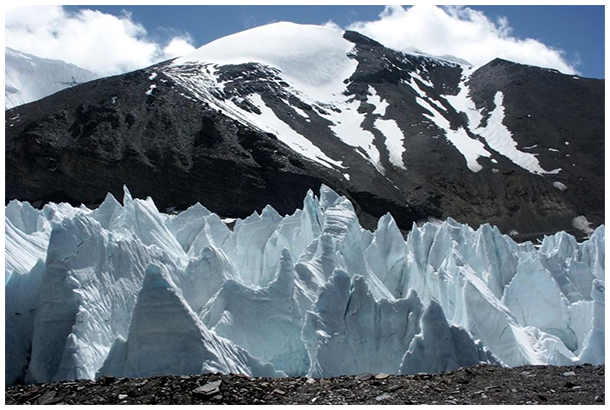
We can laugh at the pomposity of China’s legislative voice, and also take very seriously what this all means, on the ground, for Tibetans.
Clearly, depopulating rural Tibet, displacing nomadic pastoralists, cancelling their land rights, ignoring and denying their customary skills of sustainable ecological management, are bad. These new regulations, enforceable from 1 May 2021, add to the pressures on traditional drogpa livestock producers to cancel lifeways that for thousands of years were both sustainable and productive.
Many new jobs will be created, based on direct funding from Beijing, to make an elaborate show of how deeply the party-state cares. Starting with the Tibetans now busy translating these sloganistic regulations into Tibetan, there will be jobs for both Han immigrants and Tibetans making an elaborate show of measuring, ennumerating, monitoring, inspecting, zoning, administering and reporting China’s success in the arduous construction of the National Ecological Civilization Highlands.
China can then not only boast of its exemplary discovery of ecology, it will also be able to say GDP is rising, due to the subsidies, and lots of Tibetans have graduated through vocational education and are now mobilised into the new economy labour force. China gets its win-win. Tibetans become more and more dependent on the party-state’s iron rice bowl, more incentivised to comply with meaningless regulations, more disempowered.
These are real impacts, and deserve real responses. At the same time we can laugh at a party-state that has just re-discovered ecology, and earnestly insists on teaching it -coercively- to Tibetans who never lost touch with deeply embedded Tibetan traditions of respecting, not exploiting, nature.
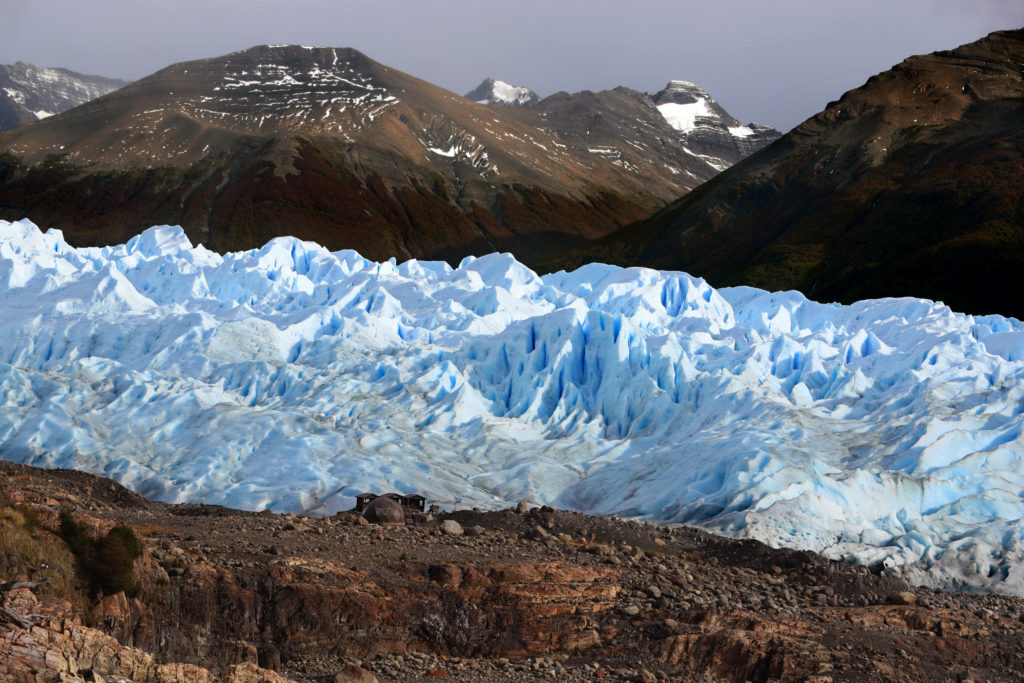
[1] 西藏自治区国家生态文明高地建设条例(2021年1月24日西藏自治区第十一届人民代表大会 第四次会议通, Regulations of the Tibet Autonomous Region on the Construction of National Ecological Civilization Highlands, https://flk.npc.gov.cn/detail.html?ZmY4MDgwODE3NzRjN2EzZDAxNzc2YjMzZjUyZTEzM2U%3D
[2] “Although he worked in Africa for over fifty years, Schweitzer was strangely indifferent to the continent’s culture. Unlike his fellow missionaries, he never learned native languages, and his service was primarily grounded in a Nietzschean rejection of European conventionalities.” Ruth Harris, Schweitzer and Africa, The Historical Journal , Volume 59 , Issue 4 , December 2016 , pp. 1107 – 1132
[3] Qie Jianrong, WHY DIDN’T THE MEP SUE THE ZIJIN MINING GROUP? in Yang, Dongping. Chinese Research Perspectives on the Environment, Volume 1: Urban Challenges, Public Participation, and Natural Disasters, BRILL, 2013.
[4] TAR Statistical Yearbook 2020, table 5-1, General Public Revenue and Expenditure
[5] Lewis Carroll, Sylvie and Bruno, 西爾薇與布魯諾.
[6] Jorge Luis Borges, “On Exactitude in Science,” in Collected Fictions, trans. Andrew Hurley (London: Penguin, 1998), 325.
Jean Baudrillard also cites Borges’s fable “On Exactitude in Science” to open his account of simulation (Simulations [New York: Semiotext(e), 1983], 1.
[7] Tani Barlow, Editor’s introduction, positions, 13:1 Spring 2005
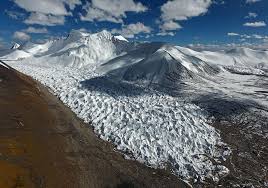


2 replies on “A NEW COMMUNIST COSMOLOGY”
Thank you Gabriel! Fantastic deconstruction of China’s National Ecological Civilization Highlands regulations. Love your references to Carroll, Borges and Eco.
spectacular. Between laughing and crying.